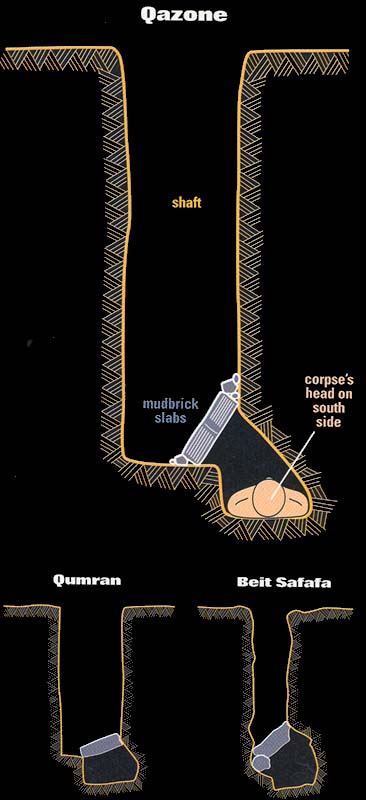Image Details

Peaceful coexistence, in life and in death, may have marked the relationship between Jews and Nabateans in the second and third centuries C.E. The shaft tombs, found in what are thought to be Essene and Nabatean cemeteries, may help illuminate the relationship between the two communities.
This drawing shows a typical Qazone shaft tomb, which is similar to tombs at Qumran and Beit Safafa (see drawing). At each site, the tombs are about 5 to 7 feet deep, with entrances measuring 7 feet long by 2 feet across. A burial shelf, or niche, dug at the bottom of the shaft held the body. All the Qazone and Qumran tombs were oriented north-south, as were half the Beit Safafa tombs. The bodies (usually one per tomb) were laid to rest on their backs, with their heads to the south. Large mudbricks or stone slabs sealed off the burial niches, and the shafts were filled with dirt and rubble.
